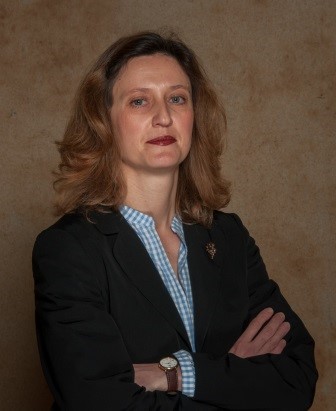Invited Speaker

Dr. Marina Ćetković
Associate Professor, Department for Engineering Mechanics and Theory of StructuresFaculty of Civil Engineering, University of Belgrade, Serbia
Speech Title: Thermo-Mechanical Stability of FRP and FGM Plates with Geometrical Imperfections Using Layer Wise Finite Element
Abstract: One of the ultimate limit state important for the safe design of structures is failure due to buckling. The origin of buckling, as the sudden change in shape of structural component, may arise from mechanical as well from thermal loading conditions. Apart from the loading conditions, the geometrical imperfections are another parameter important for the overall structural stability. In wish to fulfil the lack of thermo-mechanical stability solutions based on Layer Wise (LW) plate theories, which will be able to include general form of geometrical imperfection, this study presents the LW finite element for thermo-mechanical stability of geometrically imperfect FRP (Fibre reinforced polymer) and FGM (Functionally Graded Material) plates. The mathematical model, based on Layer wise theory of Reddy, assumes layer wise variation of in plane displacements and constant transverse displacement through the thickness, linear strain displacement relations and isotropic/orthotropic material properties. The material properties of FGM plates are assumed to be constant in xy-plane and vary through the thickness by a power law function in terms of the volume fraction of the constituents. The Koiter’s model for initial geometric imperfection is adopted. The principle of virtual displacement (PVD) is utilized to derive Euler-Lagrange differential equation of linearized buckling problem. The weak form is discretized using nine node Lagrangian isoparametric finite element. The original MATLAB computer program is coded for the finite element solution and used to study influence of plate thickness a/h, aspect ratio a/b, power low index, imperfection form and material properties on thermo-mechanical stability of FRP and FGM plates. The results are compared with the one from the literature.
Acknowledgements: The author is thankful for the financial support received by the Ministry for Education, Science and Technology, Republic of Serbia, grant number 200092.
Biography: Assoc. Prof. Dr Marina Ćetković received BSc, MSc and PhD at the Faculty of Civil Engineering, University of Belgrade, Serbia in 2000, 2005 and 2011, respectively. She is currently Associate Professor at the Department for Engineering Mechanics and Theory of Structures at Faculty of Civil Engineering, University of Belgrade. She is responsible for the BSc and MSc courses: Structural Mechanics and Elasto-plastic Analysis of Structures, as well as on PhD course Theory of Composite Structures. She is s author of about fifty papers published in international and national journals, monographs, and reports from international and national conferences. Marina Cetkovic is reviewer in international journals in the field of structural mechanics, especially with relation on formulation of numerical models of composite and FGM structures using FEM and MATLAB. Marina Ćetković is a member of the Serbian Society for Mechanics and Society for Structural Integrity and Life of Structures.

